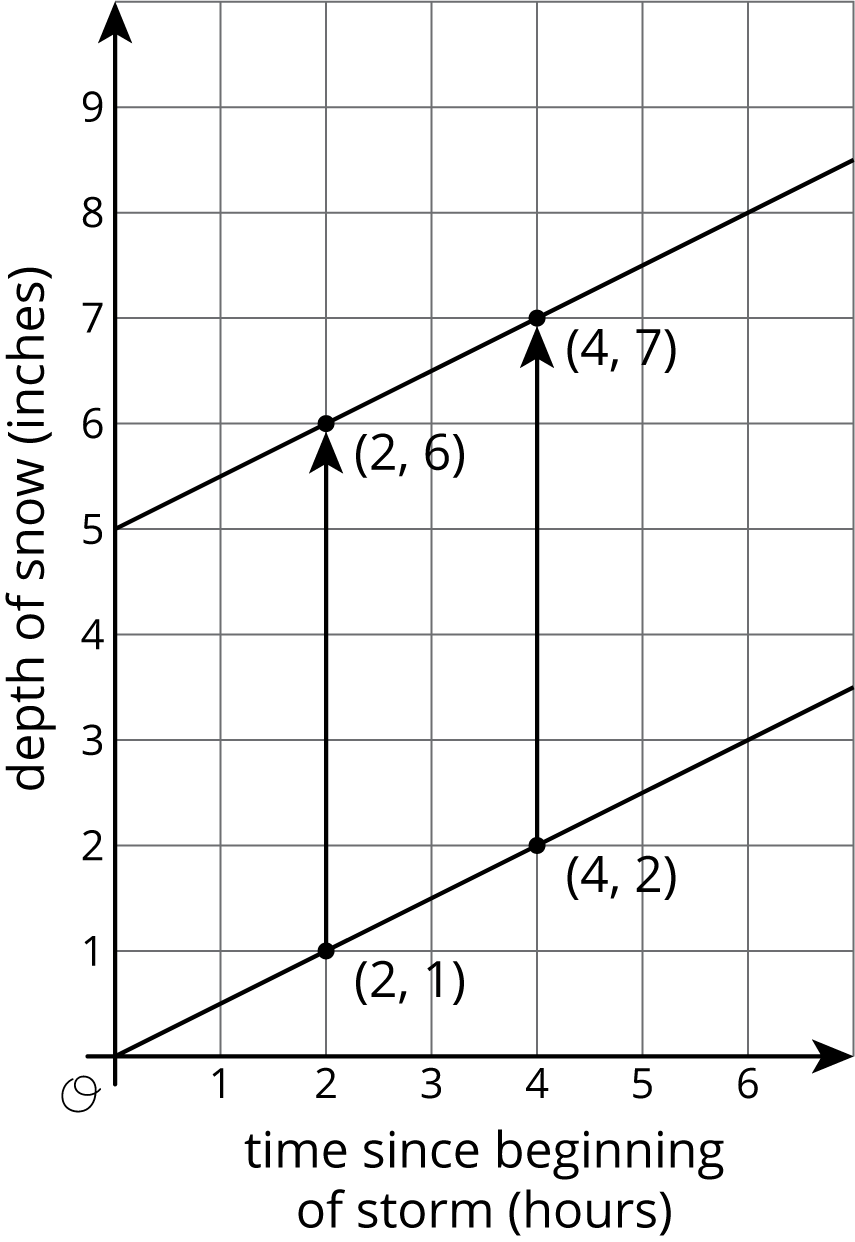8.1: Lines that Are Translations

The diagram shows several lines. You can only see part of the lines, but they actually continue forever in both directions.
- Which lines are images of line $f$ under a translation?
- For each line that is a translation of $f$, draw an arrow on the grid that shows the vertical translation distance.

